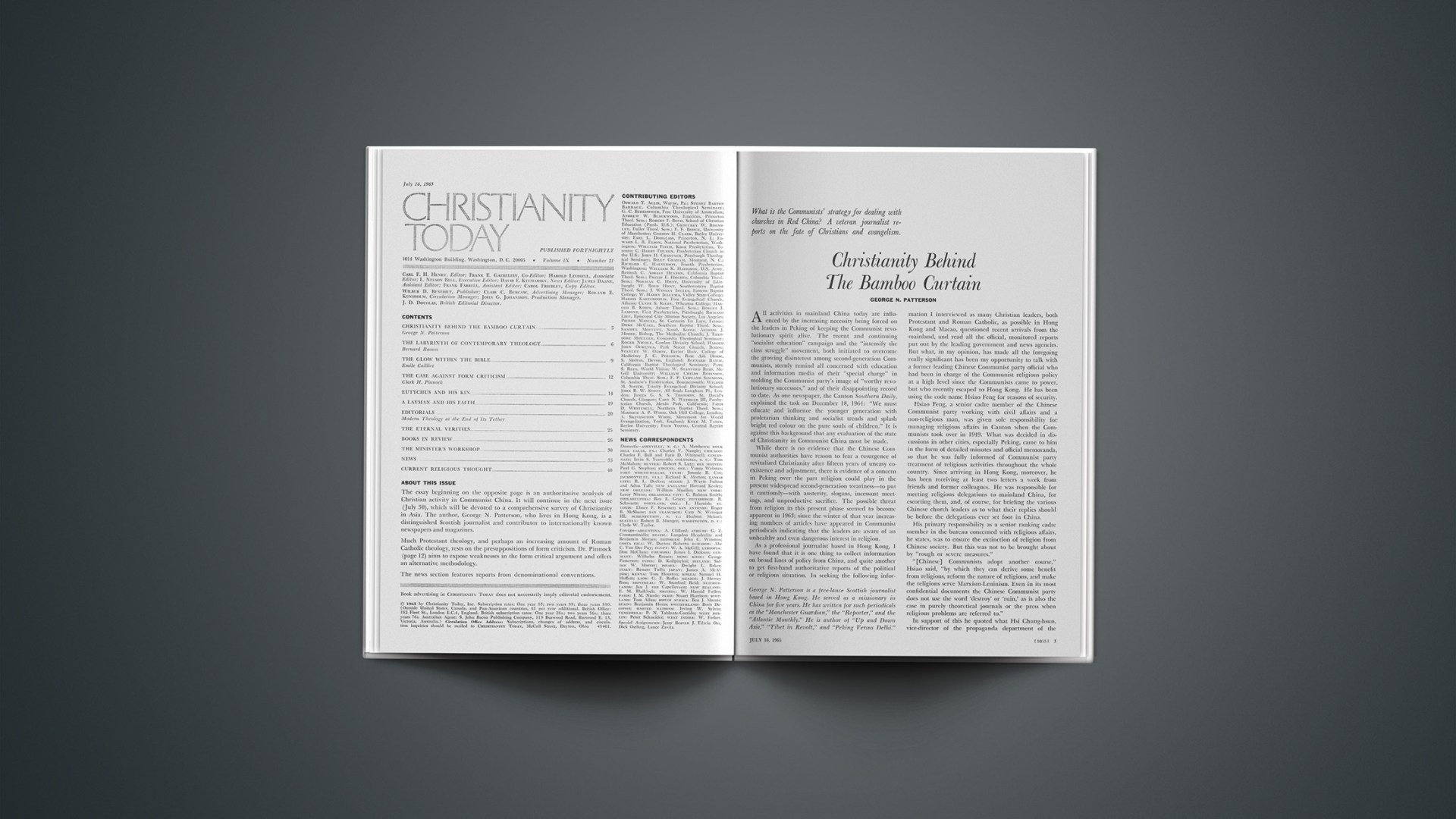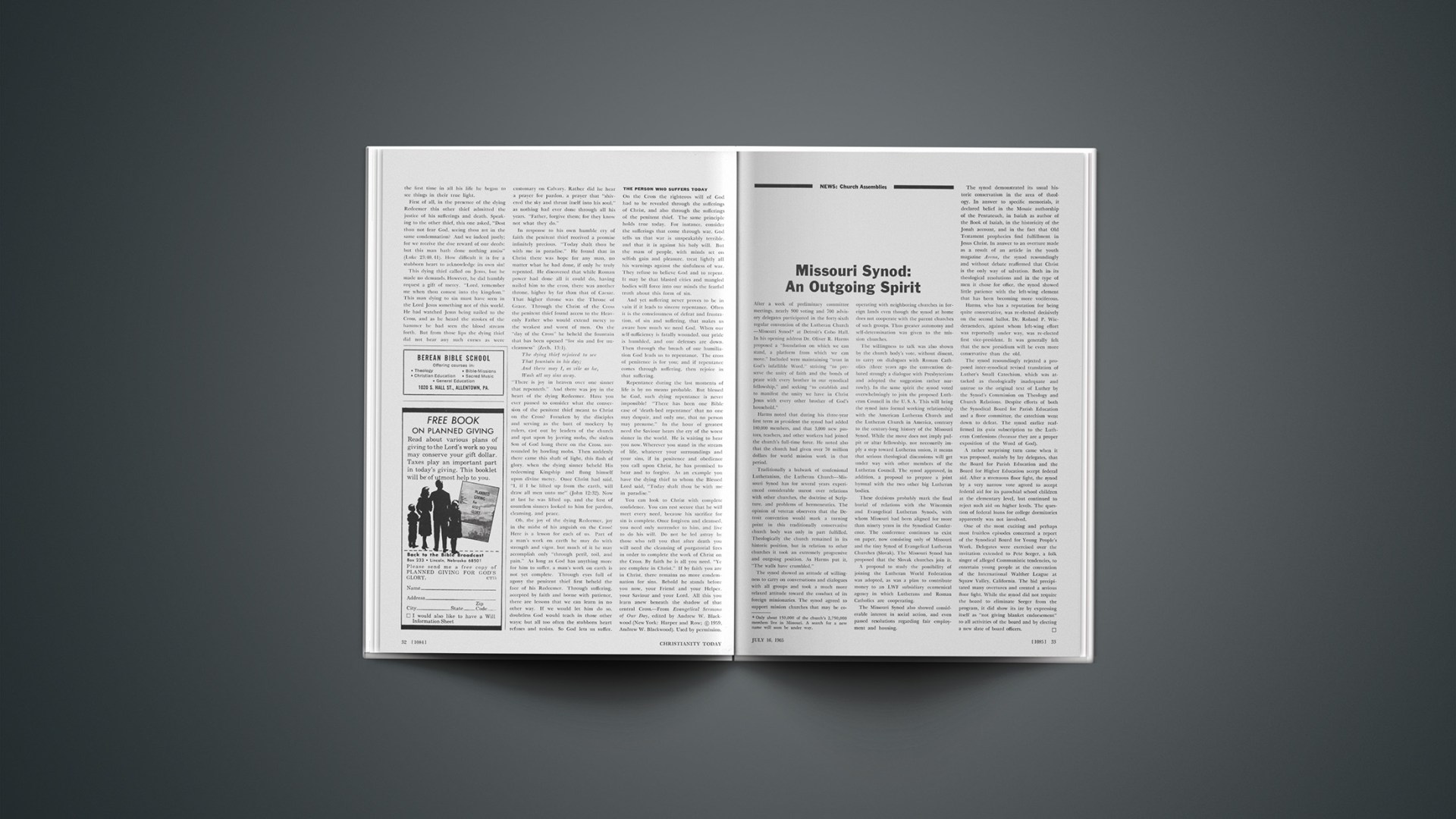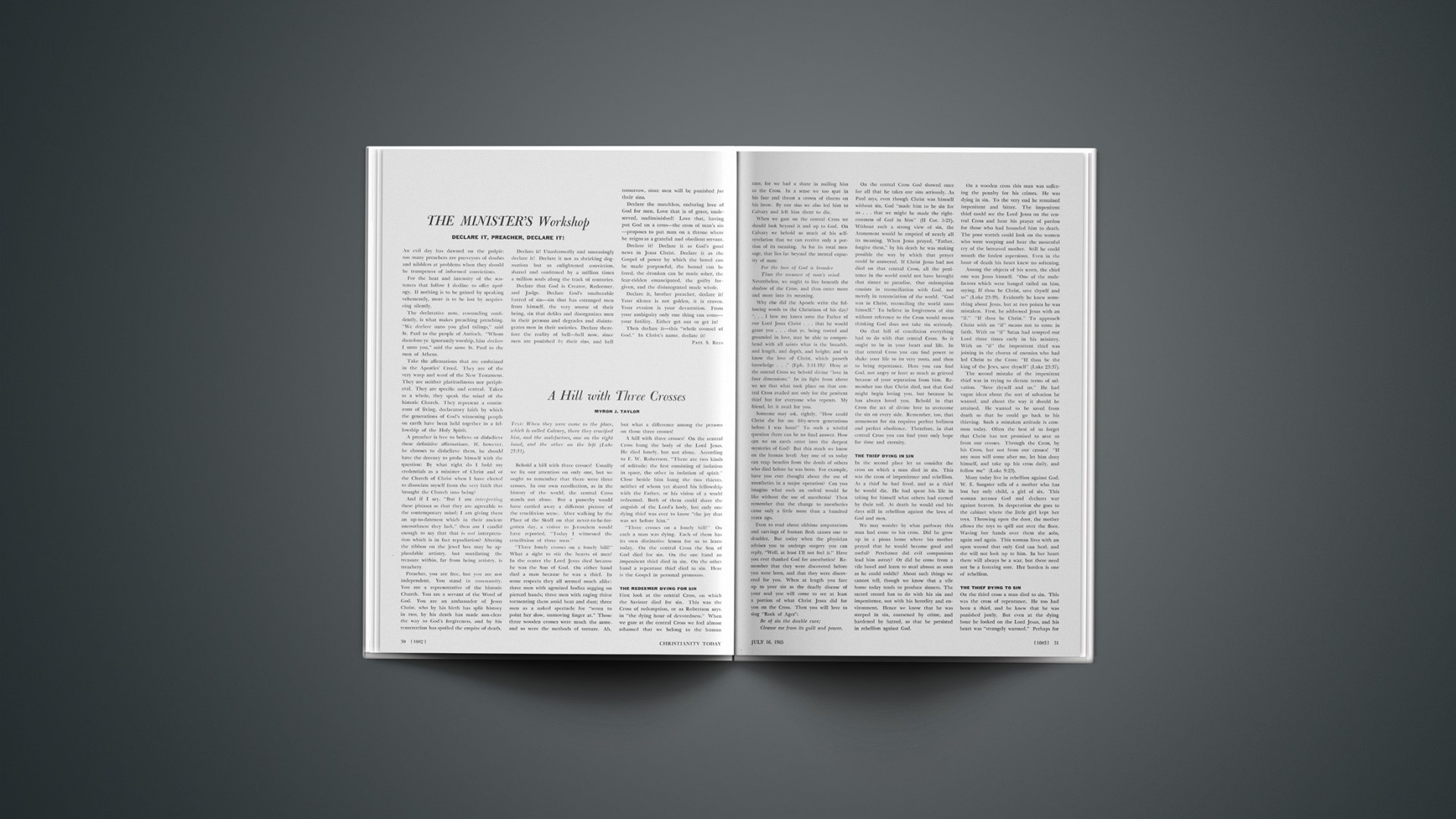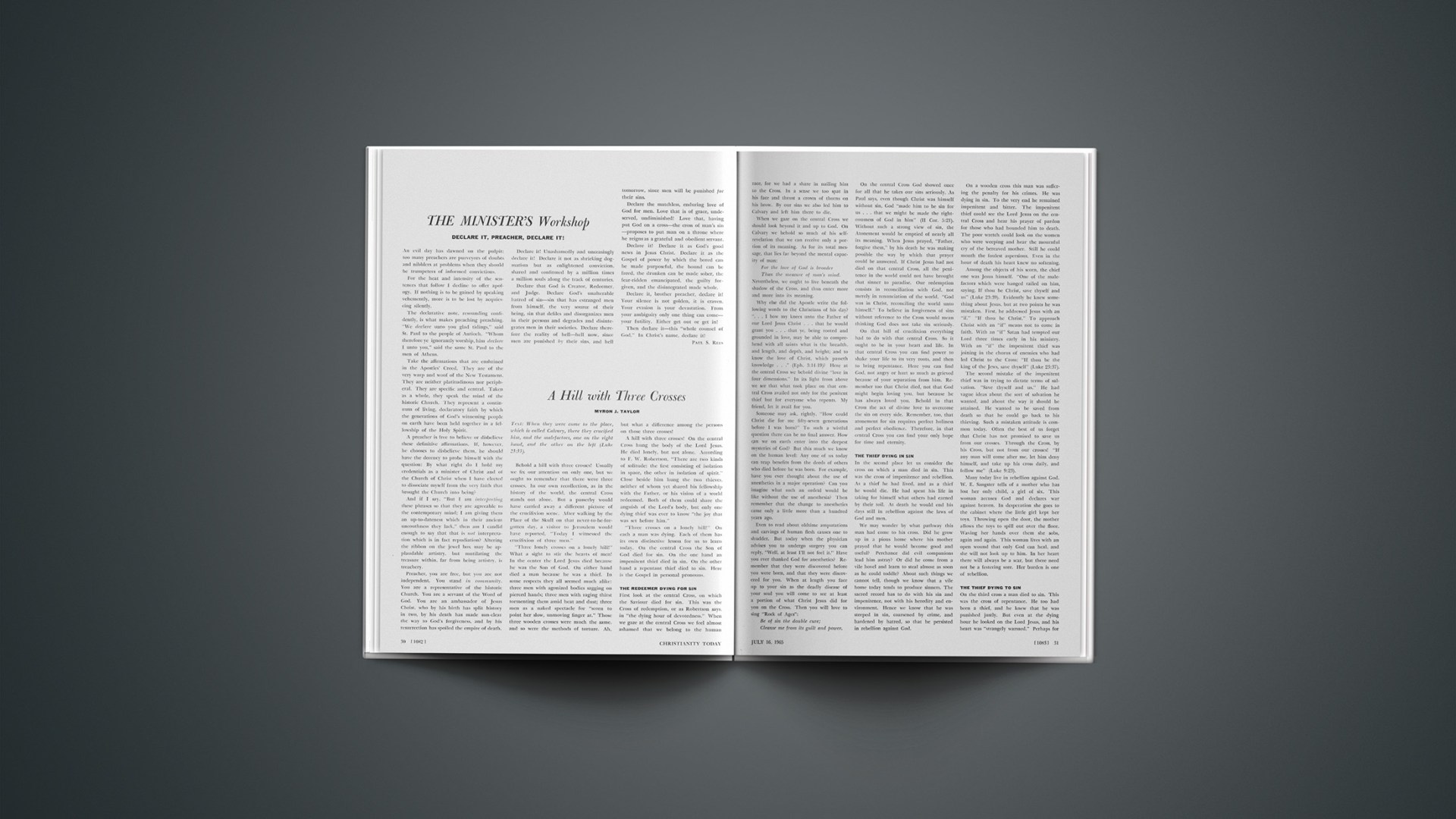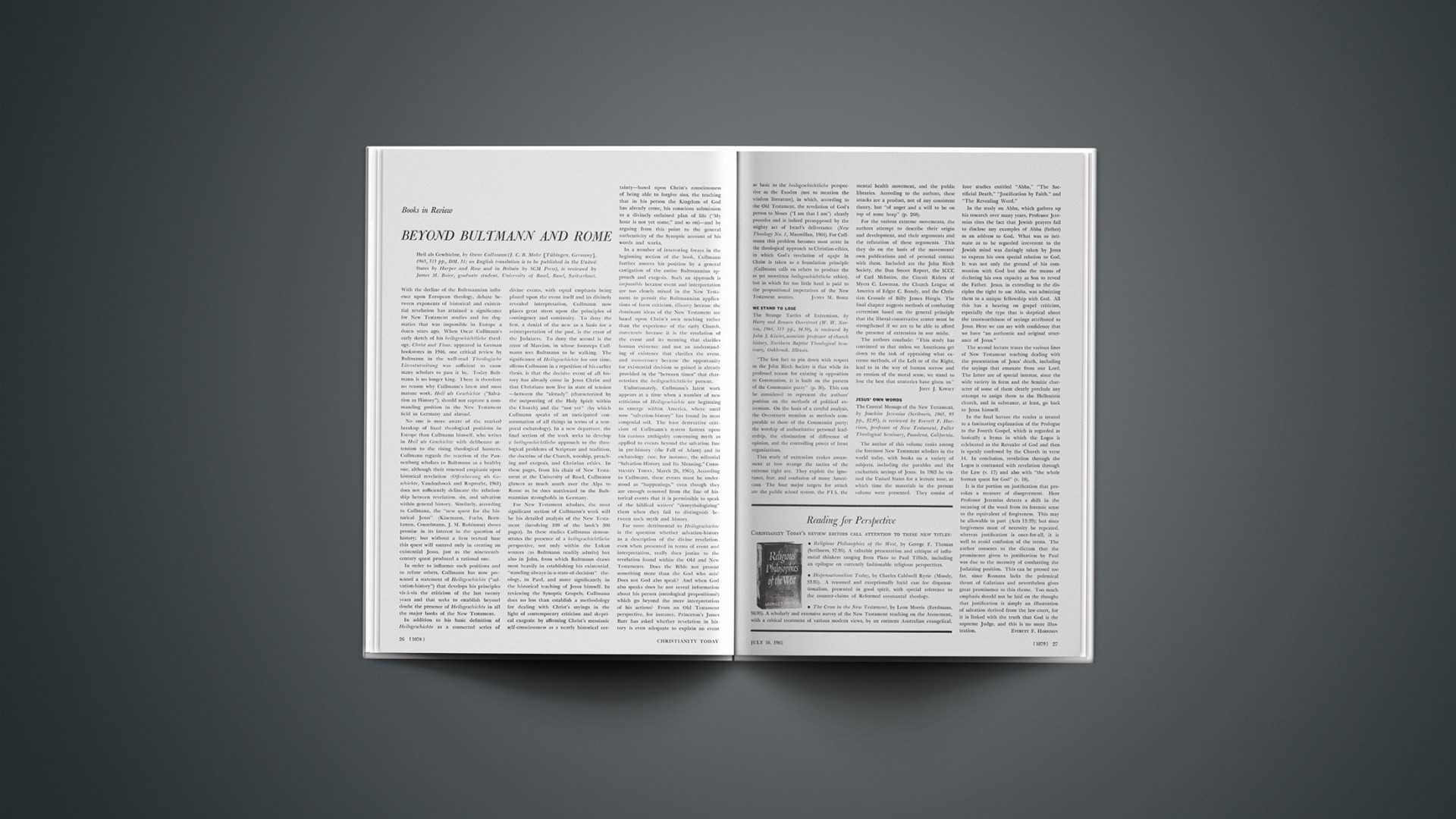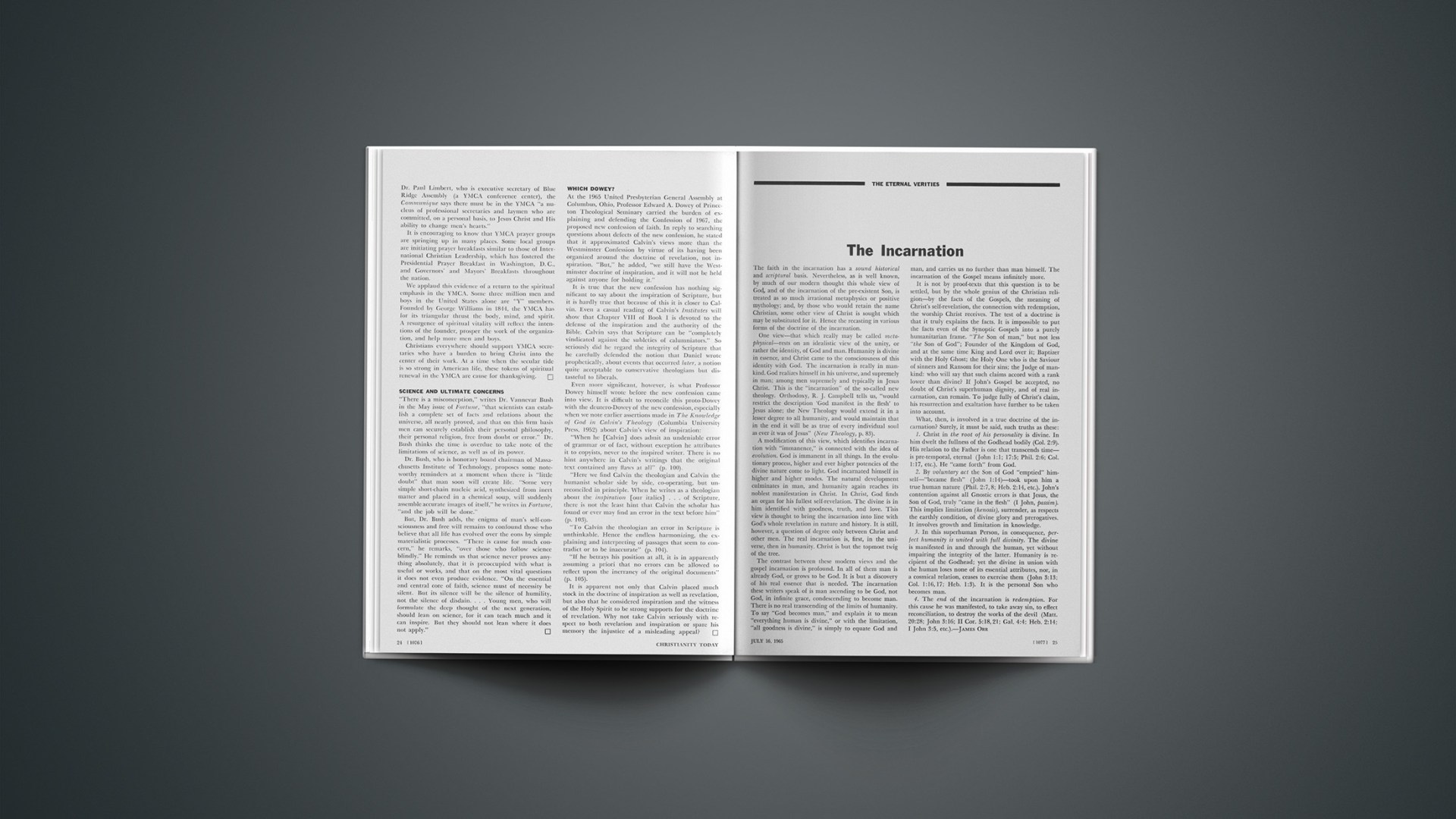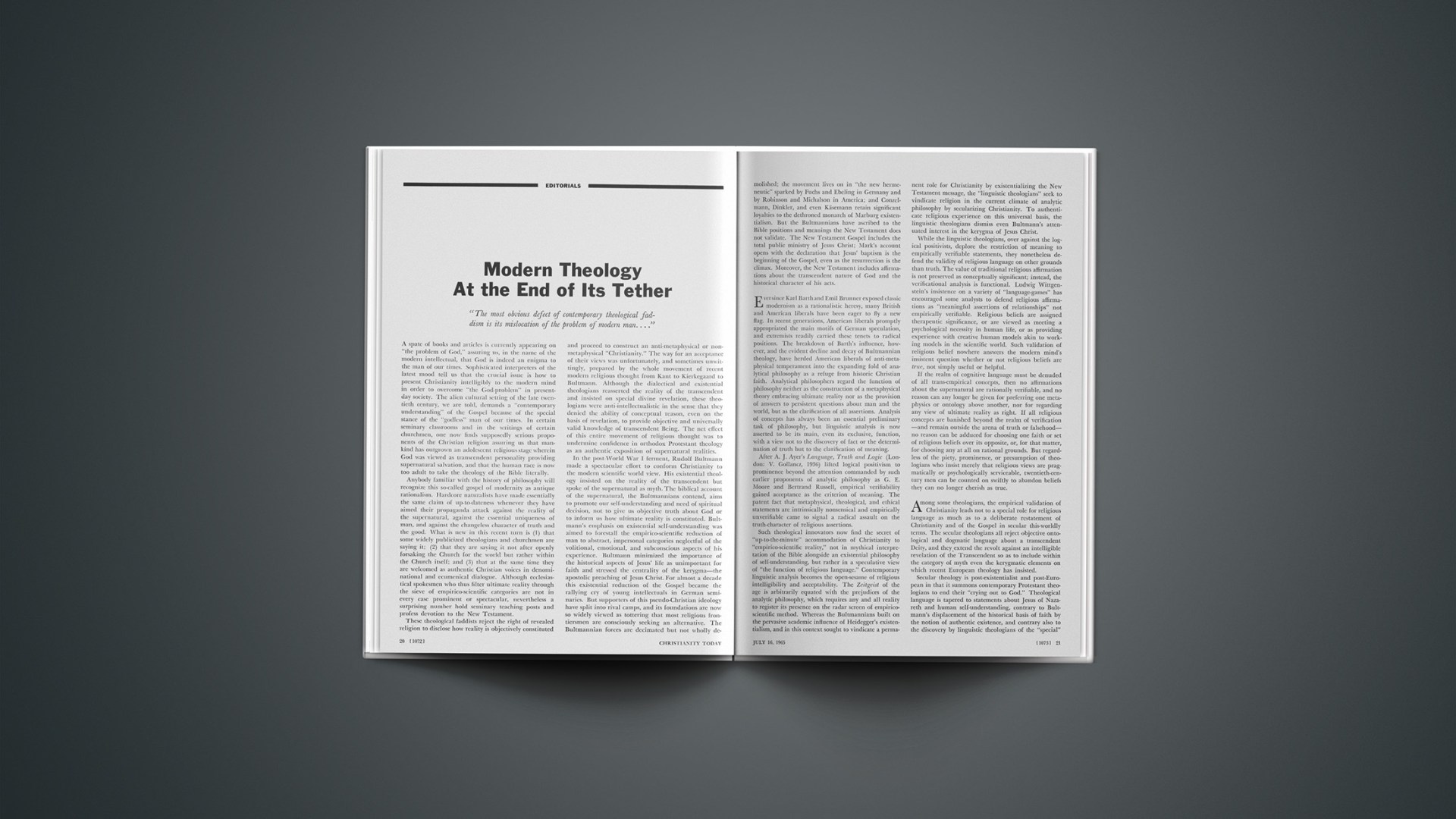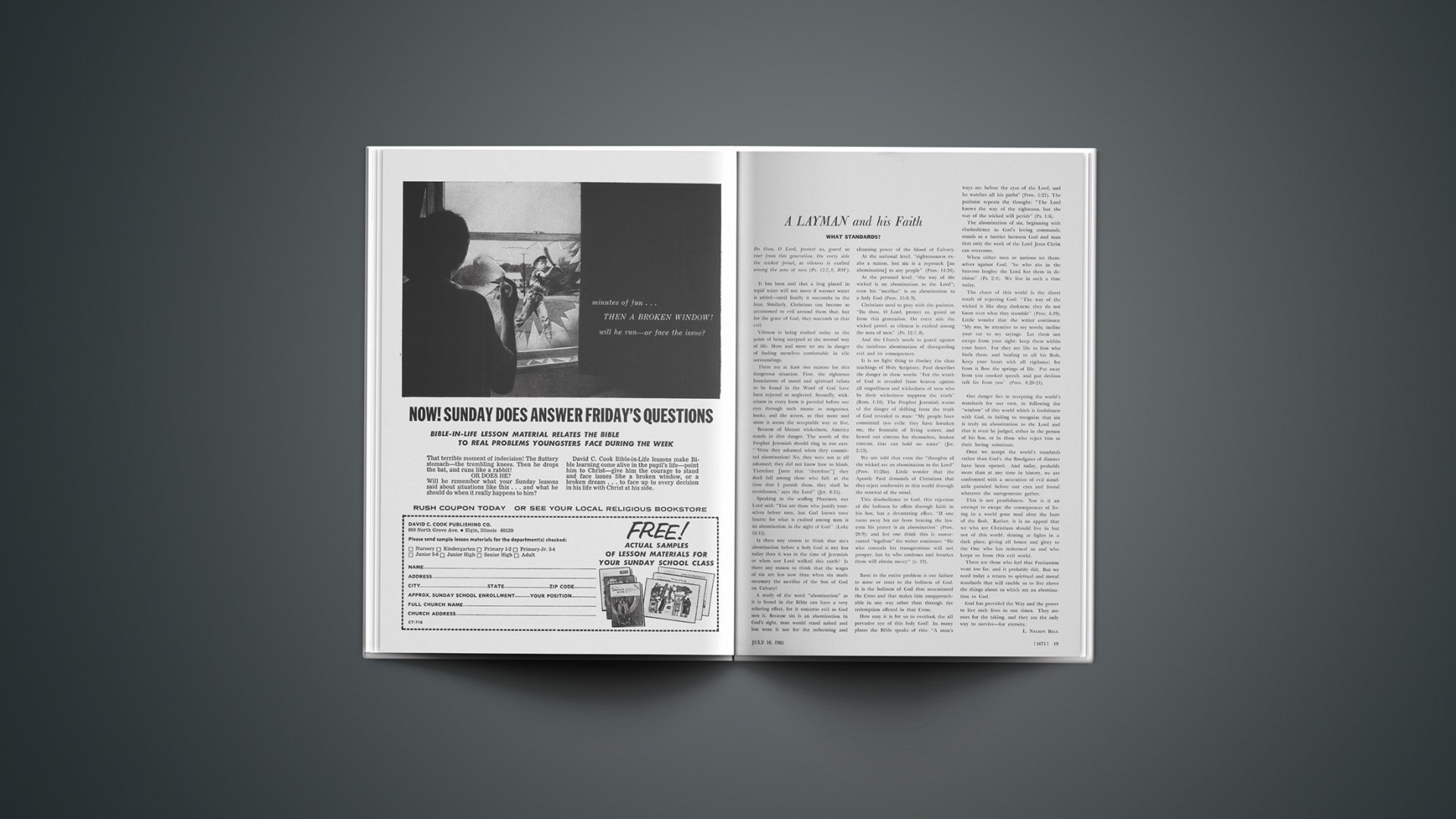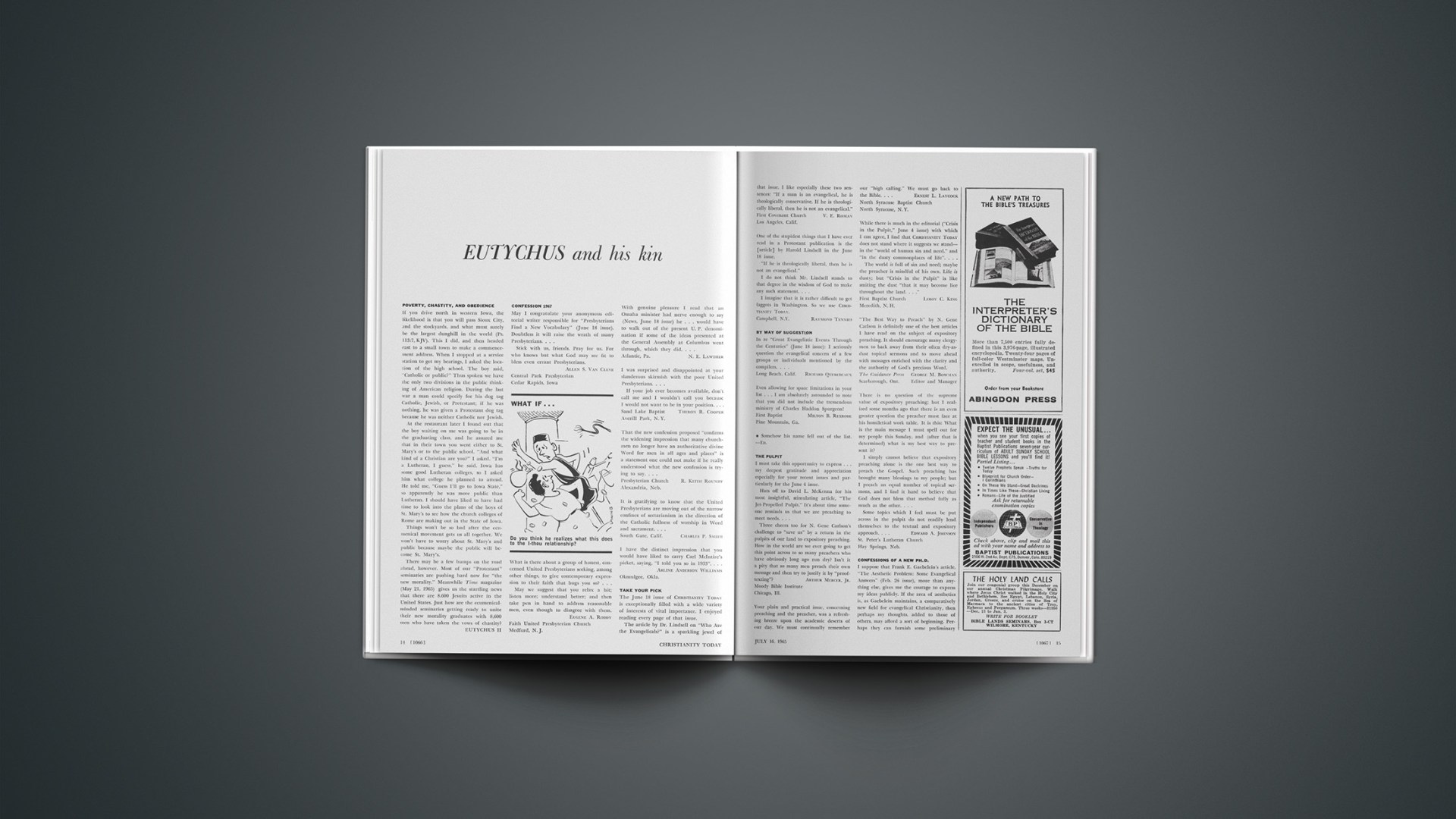Ecumenical winds are blowing across the Bible belt. Breezes first generated by elements of the National and World Councils of Churches are now being accelerated by stirrings within Roman Catholicism. A conscious movement is in the air for some measure of rapprochement with those Christians rapidly becoming known from the outside as “conservative evangelicals.”1Dialogues between Roman Catholics and ecumenically oriented Protestant churchmen, meanwhile, are in full swing. Representatives of top-level Episcopal and Roman Catholic commissions held an all-day conference in Washington last month. Lutheran-Catholic theological talks were scheduled in Baltimore this month (see also Missouri Synod action, page 33).
Indeed, an informal evangelical-Roman Catholic dialogue may already be under way, representing an advance beyond attendance of observers at the Vatican Council.
Augustin Cardinal Bea, head of the Vatican Secretariat for Promoting Christian Unity, is reported to have conferred recently with a conservative Protestant theologian known for years as an outspoken critic of Romish error. The theologian recalls that “we talked shop on the problem of inspiration. He even found for me one of his old books, De Inspiratione Scripturae Sacre, which is out of print.”
Bea is said to be less than elated over the progress of talks between the Vatican and the World Council, which seems beset with tension with the world confessional bodies. Bea reportedly laments the lack of representative voices among those carrying on the Protestant side of the dialogue: “Wherever I come, I find a bishop or a professor who has his private opinions, but cannot speak for a church.” Bea also was quoted on a theological note: “These people have learned nothing. It is the old liberalism.”
In North America, meanwhile, an overture for dialogue with evangelicals came from the influential pen of Father John B. Sheerin, editor of the Catholic World, who has served as chairman of the press panel established at the Vatican Council.
Father Sheerin, a priest of the Paulist order, wrote in the June issue of the Catholic World that “the new evangelicals deserve our admiration and emulation for their reverence for the Word of God.” He reserved special praise for evangelist Billy Graham and enumerated reasons for closer contacts based on common convictions.
Sheerin noted the efforts to woo evangelicals by Dr. Eugene L. Smith, U. S. secretary for the WCC, adding: “What he says by way of advice to Protestant ecumenists can be applied to Catholics as well.” Here are excerpts from the Catholic World article:
“We have neglected conservative evangelicals and it is time that we made a sincere effort to cultivate better relations with them. We have much in common with them and there is every reason why we should be friendly. Catholic mission preachers have often remarked that Billy Graham’s sermons are very similar in content to Catholic mission sermons. We tend to underestimate the number of conservatives as against Liberals and neo-Orthodox Protestants in America.”
“We must acknowledge that the new evangelical is right in focusing a strong light on the need of personal responsibility and individual initiative in God’s service and in detecting the pitfalls in a gospel that removes suffering as an element in the Christian life.”
“They put us to shame with their missionary zeal.”
“To understand their situation we have to realize that any evangelical who engages in dialogue with a Roman Catholic will probably have to do so at the price of sharp criticism from his confreres.”
Complicating factors in the proposed dialogue include the long history of repression of evangelical efforts in Catholic lands and the tendency at best to tolerate Protestant missions.
Sheerin seems to follow evangelical activity closely, and his article’s only serious theological blunder is in attributing to the new evangelicals a belief in baptismal regeneration.
Sheerin’s article quotes CHRISTIANITY TODAY and thus adds to this magazine’s laurels from Roman Catholic sources. Even more generous was the praise of a well-known Roman Catholic lay columnist, Dale Francis, in the May 23 issue of the Operation Understanding Edition of Our Sunday Visitor. Francis, asked to name the one publication that most reliably reflected the views of American Protestants, designated CHRISTIANITY TODAY. He tempered the tribute by adding that he thought the Christianity Century and Christianity and Crisis more influential.
The dialogue seems to have begun.
Miscellany
The Bible, a three-hour Italian film said to be based on that portion of the book of Genesis from Creation through the story of Abraham, is scheduled to be premiered in New York on September 17, 1966. Total investment thus far has been put at $18,000,000, making the film one of the costliest in history. The screenplay is by Christopher Fry, English dramatist.
Wake Forest College (Southern Baptist) announced last month the receipt of gifts totaling $3,500,000 from the Mary Reynolds Babcock Foundation. Assets to be transferred to the college include an office building with 206,000 square feet of floor space.
Washington Cathedral is embarking on a $20,000,000 building program aimed at completion of construction by 1985. The edifice has been under a step-by-step construction plan for more than fifty years.
A new quarterly journal sponsored by a group of liberal Southern churchmen made its debut last month. The publication bears the Greek name Katallagete, which means “be reconciled.”
Church World Service arranged for an emergency airlift of medicines last month to East Pakistan, where some seven million persons were reported homeless as the result of a devastating cyclone and tidal bore. Some $228,900 worth of drugs donated by Wyeth Laboratories was included in the first shipment. The toll in East Pakistan was said to be an estimated 13,000 dead and 20,000,000 suffering crop losses or house damage.
A 41-year-old Roman Catholic priest in Ceylon sought unsuccessfully last month to obtain a papal dispensation to marry a local beauty queen. The priest, Father Noel Crusz, is well known in Ceylon for a series of radio broadcasts. He had already announced plans to marry Miss Manel de Silva, a 28-year-old school teacher who was “Miss Ceylon” of 1963.
Christian, Jewish, Hindu, Buddhist, and Muslim leaders participated in a “Convocation of Religion for World Peace” marking the twentieth anniversary of the founding of the United Nations in San Francisco. United Nations Secretary General U Thant told a crowd of about 10,000 that he felt “very strongly that the moral and spiritual advance today has not kept pace with the material progress.”
A Florida clergyman publicly protested the serving of beer at a White House function for young people last month. Dr. Malcolm B. Knight, moderator of the Jacksonville Baptist Association, called on the First Family to “set a high moral example which can be followed by all.” The beer-drinking occasion was a dance sponsored by Luci Johnson for 250 sons and daughters of the Washington diplomatic corps.
The Revised Standard Version of the New Testament is now available, with slight adaptations, in a Roman Catholic edition. It was published in Great Britain in June and is scheduled for publication in America this month. Thomas Nelson and Sons is publishing the Testament in both countries.
Delegates of the Methodist Central Jurisdiction (Negro) voted down a “resolution of invitation” that would have removed the denomination’s top-level racial barriers in eight states: Louisiana, Texas, Arkansas, Oklahoma, New Mexico, Kansas, Nebraska, and Missouri. The proposal had already been approved by delegates of the white South Central Jurisdiction.
Producer John Krimsky plans to make a Broadway comedy out of Dr. Charles Merrill Smith’s best-selling spoof, How to Become a Bishop Without Being Religious.
Personalia
Dr. Conwell A. Anderson was named first president of Maryland Baptist College, which is due to open classes in the fall of 1967.
The Rev. Alex Thomas Forester, pastor of the Fresno (California) Presbyterian Church, was elected moderator of the General Assembly of the Cumberland Presbyterian Church.
Dr. Donald McGavran was named dean of the new School of World Mission at Fuller Theological Seminary. The Institute of Church Growth, founded at Northwest Christian College and directed by McGavran, will be moved to the Fuller campus and become part of the school program.
Dr. Norman K. Gottwald was appointed professor of Old Testament at Berkeley Baptist Divinity School.
Dr. Hugh F. Sensibaugh, minister of Lockland Christian Church in Cincinnati, was elected president for 1966 of the North American Christian Convention.
The Rev. Harry L. Evans was elected president of Trinity College and Trinity Evangelical Divinity School.
E. Harold Fisher was named president of Blue Mountain College (Southern Baptist), succeeding the late Wilfred C. Tyler.
Dr. Henry Zwaanstra was elected to the chair of church history at Calvin Seminary.
Jo-Ann Price, former religion writer for the New York Herald Tribune, won the 1965 James O. Supple Award of the Religious Newswriters Association.
They Say
“Two interesting effects are observable in the new ‘openness’ achieved within the Roman Catholic Church by the Second Vatican Council. For one thing, the inhibitions of evangelical Roman Catholics have been released so that new and rewarding contacts are taking place all over the world between Gospel and Bible believing priests and ministers. But at the same time the inhibitions of Rome’s humanists have also been released so that new and open rejection of both Roman and evangelical doctrine are heard from Roman sources.”—Editorial in The Presbyterian Journal.


